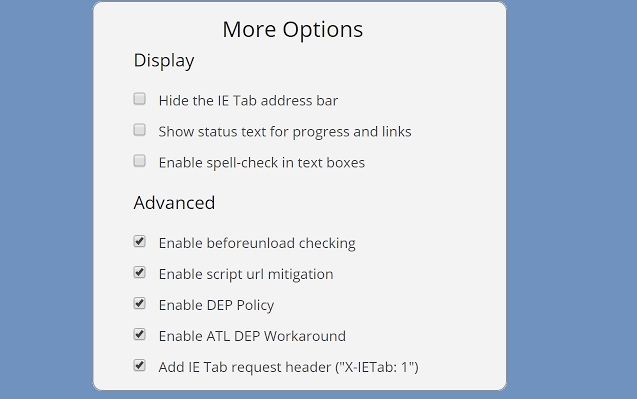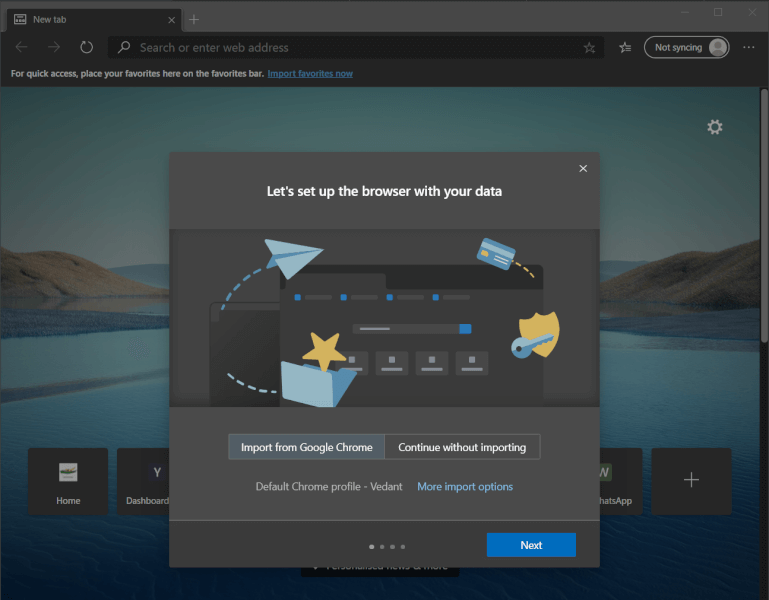- Download Ie Tab (chrome) 11.2.13.1 For Mac Os Download
- Download Ie Tab (chrome) 11.2.13.1 For Mac Os Windows 7
- Download Ie Tab (chrome) 11.2.13.1 For Mac Os Free
- Download Ie Tab (chrome) 11.2.13.1 For Mac Os Download
The reimagined web Explore amazing new websites built in collaboration with Internet Explorer. From the slopes of Mount Everest to the stunning world of Contre Jour, experience the beauty of the web in Internet Explorer. See the sites Don't miss out Make Internet Explorer your default browser. Surf the web with the fast, fluid, perfect for. Chrome is harder on a Mac’s battery life than Apple’s native Safari browser. However, Chrome comes out ahead of Safari in terms of browsing speed, extensions, and video loading capabilities. Safari does have many of Chrome’s features such as tab syncing across devices and auto-filling based on previous searches. Search the world's information, including webpages, images, videos and more. Google has many special features to help you find exactly what you're looking for.
Devices and Mac OS X version
VLC media player requires Mac OS X 10.7.5 or later. It runs on any Mac with a 64-bit Intel processor or an Apple Silicon chip. Previous devices are supported by older releases.
Note that the first generation of Intel-based Macs equipped with Core Solo or Core Duo processors is no longer supported. Please use version 2.0.10 linked below.
If you need help in finding the correct package matching your Mac's processor architecture, please see this official support document by Apple. You can also choose to install a Universal Binary.
Web browser plugin for Mac OS X
Support for NPAPI plugins was removed from all modern web browsers, so VLC's plugin is no longer maintained. The last version is 3.0.4 and can be found here. It will not receive any further updates.

Older versions of Mac OS X and VLC media player
We provide older releases for users who wish to deploy our software on legacy releases of Mac OS X. You can find recommendations for the respective operating system version below. Note that support ended for all releases listed below and hence they won't receive any further updates.
Download Ie Tab (chrome) 11.2.13.1 For Mac Os Download
Mac OS X 10.6 Snow Leopard
Use VLC 2.2.8. Get it here.
Mac OS X 10.5 Leopard
Use VLC 2.0.10. Get it for PowerPC or 32bit Intel.
Mac OS X 10.4 Tiger
Mac OS X 10.4.7 or later is required
Use VLC 0.9.10. Get it for PowerPC or Intel.
Mac OS X 10.3 Panther
QuickTime 6.5.2 or later is required
Use VLC 0.8.6i. Get it for PowerPC.

Mac OS X 10.2 Jaguar
Use VLC 0.8.4a. Get it for PowerPC.
Mac OS X 10.0 Cheetah and 10.1 Puma
Use VLC 0.7.0. Get it for PowerPC.
Please select a browser below to access instructions for configuring your browser to use the certificates on your CAC.

IE and Chrome
First check whether your certificates are already available to your browser.
For Internet Explorer 8.0 and above:
- Navigate to Tools > Internet Options > Content and click Certificates.
- On the Personal tab, review the list of certificates to determine if your CAC certificates are in the list. The certificates on your CAC will be issued by a DoD CA.
- If the certificates appear in the list, you are finished. If the certificates do not appear in the list, please see the note below.
For Google Chrome:
- Navigate to Tools > Options > Under the Hood and click Manage Certificates in the HTTPS/SSL section.
- On the Personal tab, review the list of certificates to determine if your CAC certificates are in the list. The certificates on your CAC will be issued by a DoD CA.
- If the certificates appear in the list, you are finished. If the certificates do not appear in the list, please see the note below.
NOTE: If your certificates are not in the list and you’re using ActivClient, please make sure it is installed correctly. If your certificates are not in the list and you are using other middleware, you can contact your CC/S/A for more information on the middleware requirements for your organization. You can find their contact information on our Contact Us tab.
Firefox
Below are complete instructions for using Firefox with your CAC. You may also download these instructions.
Install Certificates from InstallRoot
- Download and install the InstallRoot tool following the instructions in the InstallRoot User Guide or watch this video to learn how:
- Open the InstallRoot tool and select Firefox/Mozilla/Netscape from the Select Trust Store picklist at the bottom of the window.
- Ensure only the top Install DoD NIPRNET Certificates box is checked.
- Click the Install button and wait for the installation to complete. Please wait until you see a confirmation dialog indicating the tool is finished.
- Open Firefox
- Click on Tools > Options in the menu bar.
- In the Options window, go to Advanced > Encryption > Security Devices.
- In the new window, click on Load.
- Enter “ActivClient(CAC)” for the Module Name.
Click Browse to the right of the Module Filename field. Browse to the location of the ActivClient PKCS11 library, acpkcs211.dll. This is typically located at C:Program Files (x86)ActivIdentityActivClientacpkcs211.dll in ActivClient 6.2, and C:Windowssystem32acpkcs201-ns.dll in ActivClient 6.1 and earlier.
Click OK, and then OK again in the confirmation window.
- The confirmation message will show that the security device (CAC) was loaded. CAC certificates can now be used with the browser. Click OK to close the window.
- Open Firefox
- Click on Tools > Options in the menu bar.
- In the Options window, go to Advanced > Encryption > Validation.
- Ensure the option Use the OCSP to confirm the current validity of certificates is checked. Also ensure When an OCSP server connection fails, treat the certificate as invalid is checked.
Using Common Access Card (CAC) certificates in Firefox
These instructions will enable ActivIdentity’s ActivClient software to work within Firefox. Before proceeding, try to ensure the latest version of ActivClient is installed by going to the ActivClient website to check the latest version. Before installing the latest version, please uninstall any previous versions of ActivClient.
As of version 6.2, ActivClient by default configures Firefox to accept the CAC certificates without any additional configuration. You may use the following instructions to verify that it has been installed properly. If using an older version of ActivClient, these instructions will assist with proper configuration.
Ensure the Online Certificate Status Protocol (OCSP) is Performing Revocation Checking
With any versions of ActivClient later than 6.2, these settings will be automatically configured. However, these instructions can be used to confirm proper configuration for older versions of ActivClient.
Safari
To get started you will need:
- CAC (see note below)
- Card reader
You can get started using your CAC on your Mac OS X system by following these basic steps:
Download Ie Tab (chrome) 11.2.13.1 For Mac Os Windows 7

- Get a card reader
Typically Macs do not come with card readers and therefore an external card reader is necessary. At this time, the best advice for obtaining a card reader is through working with your home component. In addition, please review the DoD CAC Reader Specifications for more information regarding card reader requirements. - Download and install the OS X Smartcard Services package
The OS X Smartcard Services Package allows a Mac to read and communicate with a smart card. In order for your machine to recognize your CAC certificates and DoD websites as trusted, the installer will load the DoD CA certificates on OS X. Please refer to this page for specific installation instructions. - Address the cross-certificate chaining Issue
These instructions walk through adjusting the trust settings on the Interoperability Root CA (IRCA) > DoD Root CA 2 and the US DoD CCEB IRCA 1 > DoD Root CA 2 certificates to prevent cross-certificate chaining issues. This can make it appear that your certificates are issued by roots other than the DoD Root CA 2 and can prevent access to DoD websites. - Configure Chrome and Safari, if necessary
Safari and Google Chrome rely on Keychain Access properly recognizing your CAC certificates.- In Finder, navigate to Go > Utilities and launch KeychainAccess.app
- Verify that your CAC certificates are recognized and displayed in Keychain Access
Download Ie Tab (chrome) 11.2.13.1 For Mac Os Free

Download Ie Tab (chrome) 11.2.13.1 For Mac Os Download
Note: CACs are currently made of different kinds of card stock. To determine what card stock you have, look at the back of your CAC above the magnetic strip. Most CACs are supported by the Smartcard Services package, however Oberthur ID One 128 v5.5 CACs are not. Third party middleware is available that will support these CACS; two such options are Thursby Software’s PKard and Centrify’s Express for Smart Card.